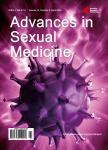Prevalence and Determinants of Modern Contraceptive Methods Use among Women of Reproductive Age (15 - 49 Years) in Rural Setting: A Case of Kishapu District, Shinyanga Region
Prevalence and Determinants of Modern Contraceptive Methods Use among Women of Reproductive Age (15 - 49 Years) in Rural Setting: A Case of Kishapu District, Shinyanga Region作者机构:Department of Epidemiology and Biostatistics Institute of Public Health Kilimanjaro Christian Medical University College Moshi Tanzania Kilimanjaro Christian Medical Centre Moshi Tanzania Community Health Department Kilimanjaro Christian Medical University College Moshi Tanzania Shinyanga Regional Medical Office Shinyanga Tanzania
出 版 物:《Advances in Sexual Medicine》 (性医学进展(英文))
年 卷 期:2019年第9卷第4期
页 面:53-66页
学科分类:1002[医学-临床医学] 100201[医学-内科学(含:心血管病、血液病、呼吸系病、消化系病、内分泌与代谢病、肾病、风湿病、传染病)] 10[医学]
主 题:Family Planning Modern Contraceptive Use Prevalence Determinants
摘 要:Background: Modern contraceptive use among women of reproductive age (15 - 49 years) is a public health priority in Tanzania. The national prevalence remains unacceptably low as 32%. Shinyanga region is one among the regions with lowest contraceptive prevalence rate (21%) and high unmet need for family planning (23%). Understanding factors contributing to its use may help to improve maternal and child health. This study aimed to assess the prevalence and determinants of modern contraceptive use among women of reproductive age. Methods: A community-based cross-sectional study was conducted in Kishapu district of Shinyanga region: A total of 602 women aged 15 - 49 years were interviewed using a standardized questionnaire. Data were analysed using SPSS version 20.0. Odds ratios with 95% confidence intervals for factors associated with use of modern contraceptives were estimated in multivariable logistic regression models. Results: The prevalence of modern contraceptive use was 42.7%. Being employed (OR 2.42, 95% CI: 1.13 - 5.18), formal educational level (OR 2.45, 95% CI: 1.38 - 4.35), couples communication (OR 2.44, 95% CI: 1.74 - 3.42) and availability of modern contraceptives (OR 1.94, 95% CI: 1.17 - 3.20) were significantly associated with current use of modern contraceptives. Husband disapproval was frequently reported as barrier for modern contraceptives in the study area. Conclusions: Numerous factors were associated with use of modern contraceptives. Husband disapproval was frequently reported as barrier for contraceptive use. Strategies to promote the importance of modern contraceptives use in the study area are warranted. District health office and concerned stakeholders should encourage male involvement for family planning.



